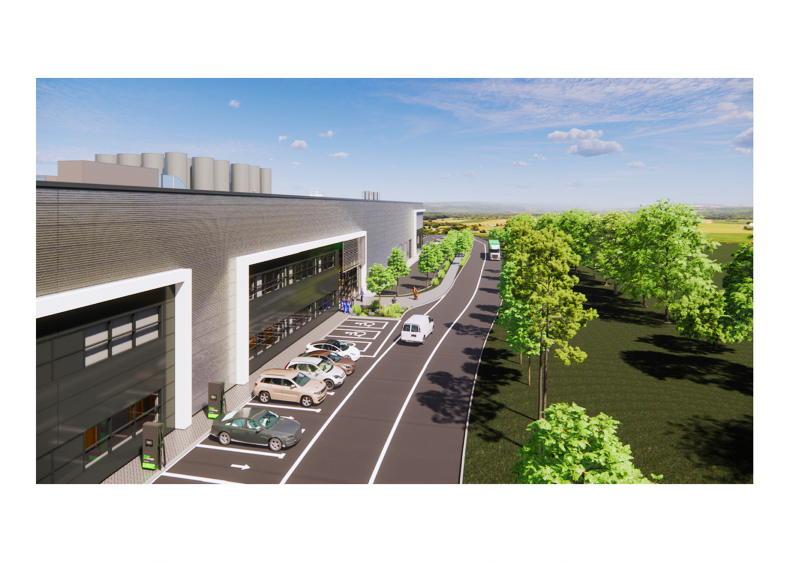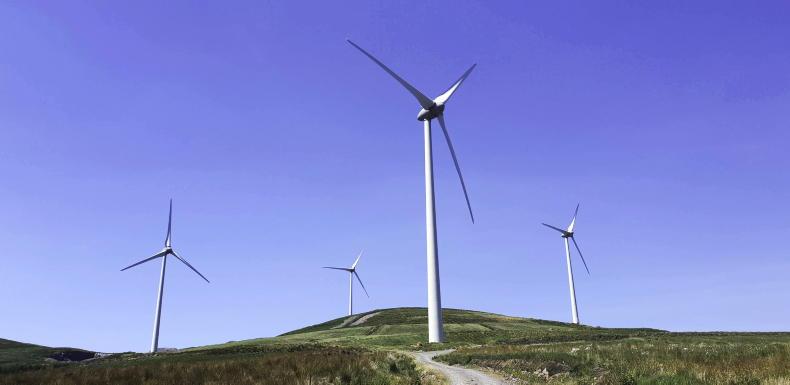In recent weeks, the Irish Farmers Journal has been travelling the country for our Renewables Roadshow. Renewable heat, solar PV and anaerobic digestion for farms have been big topics on the night. We didn’t stop there as the topic of how to retrofit your home and improve energy efficiency was also a key element of each evening. Applying for SEAI grants has been covered extensively in Irish Country Living ahead of these events, but one area that we were awaiting clarity on was a low-cost loan scheme for home energy upgrades.
In December, the Government announced that this scheme was on the way, and to expect details in January. It was then pushed to March, another date that came and passed, but last week, the new low-cost Home Energy Upgrade Loan Scheme was announced-just in time for the last event of the season in Athlone. It is the first of its kind in Ireland and for the European Investment Bank Group.

Solar panels can help reduce energy emissions within the home.
Make your home warmer
For consumers looking to make their home warmer and more energy efficient sooner rather than later, this new loan scheme may help them on their journey.
So what’s on the table? Consumers can now apply for loans of between €5,000 and €75,000 to upgrade the efficiency of their homes. You make the necessary upgrades now and then you have between one year and ten years to pay back the amount, depending on the term agreed with your lender. There is no requirement for the loan to secured against the property, which essentially means it isn’t tied to your mortgage and the scheme is live, as of last week.
Competitive rates
The first bank to announce their involvement was PTSB, coming to the market with a rate of 3.55%. Given the fact that most personal loans sit around 8-9% and those at the top of scale go as high as 14%, this is certainly competitive. Some consumers may jump straight in, especially those who have been waiting on the scheme in order to get work done on their home.
Others will sit back and wait as providers including AIB, Bank of Ireland, Avant Money and seven credit unions from the Irish League of Credit Unions (Clonmel, Connect, First South, Listowel, Naomh Brendan, North Midlands and Progressive) have all stated that they are finalising the approval process.
Given that all we’ve heard about in the last year is rising interest rates, especially with mortgages, you may be asking why consumers are being offered these rates?
It all comes back to the Government’s Climate Action Plan where the aim is to get 500,000 homes upgraded to a B2 energy rating by 2030 .
Real costs
The reality is though that achieving this BER rating simply hasn’t been achievable for many homeowners. The SEAI grants are certainly beneficial but some of these upgrades still require significant investment. For example, let’s taking external wall insulation. For a detached farmhouse, there is potentially €6,000 on the table to help you get that work done. However, depending on the size of your home, this upgrade could cost in the region of €24,000. That means finding €18,000 to get that work done, which could take homeowners years to save from. This new low-cost loan scheme now allows homeowners to apply and drawn down the funds before getting the works done, which was a big barrier in the past.
To get here, a government-funded interest rate subsidy was needed – a €500m scheme which is backed by the European Investment Bank (EIB) Group loan guarantee.
How to apply
If you’re thinking of applying there will still be the usual financial background checks to qualify but there is also another condition applied. In order to draw down the loan, homeowners must prove that the investment will ensure a 20% minimum upgrade to the BER of the home. Interestingly, 25% of the loan may be used on works outside of the upgrade.
For example, dry lining internal walls is all well and good but it’s a messy job where you’ll also need plastering and painting afterwards; these decorative works can be included in your loan application. The only exception is the installation of a fossil fuel boiler. Other boxes to tick in order to be eligible include carrying out the works with an SEAI registered One Stop Shop, Energy Partner or Community Coordinator – that’s because the upgrades must qualify for an SEAI grant.
When you’re considering how much to borrow, its wise to do your homework and figure out what needs to be done to get your home up to a BER rating of B3 or above. When you reach that level, you could then look into switching your mortgage to a green mortgage. These have the most competitive rates on the market, and could help you reduce your mortgage repayments every month.
• Over 48,000 home energy upgrades were supported through SEAI schemes in 2023
• To date, the upfront costs of investing in home energy upgrades have been a big deterrant for many homeowners looking to improve the energy efficiency of their homes, so the new loan scheme helps remove that barrier
• Recent consumer research carried out by PTSB shows that while 20% of homeowners are prepared to retrofit their home at their own expense, that intention more than trebles (to 65%) if financial assistance is made available
Read more
Low-cost loans for retrofitting houses
Consumer: low-cost finance for retrofitting upgrades
In recent weeks, the Irish Farmers Journal has been travelling the country for our Renewables Roadshow. Renewable heat, solar PV and anaerobic digestion for farms have been big topics on the night. We didn’t stop there as the topic of how to retrofit your home and improve energy efficiency was also a key element of each evening. Applying for SEAI grants has been covered extensively in Irish Country Living ahead of these events, but one area that we were awaiting clarity on was a low-cost loan scheme for home energy upgrades.
In December, the Government announced that this scheme was on the way, and to expect details in January. It was then pushed to March, another date that came and passed, but last week, the new low-cost Home Energy Upgrade Loan Scheme was announced-just in time for the last event of the season in Athlone. It is the first of its kind in Ireland and for the European Investment Bank Group.

Solar panels can help reduce energy emissions within the home.
Make your home warmer
For consumers looking to make their home warmer and more energy efficient sooner rather than later, this new loan scheme may help them on their journey.
So what’s on the table? Consumers can now apply for loans of between €5,000 and €75,000 to upgrade the efficiency of their homes. You make the necessary upgrades now and then you have between one year and ten years to pay back the amount, depending on the term agreed with your lender. There is no requirement for the loan to secured against the property, which essentially means it isn’t tied to your mortgage and the scheme is live, as of last week.
Competitive rates
The first bank to announce their involvement was PTSB, coming to the market with a rate of 3.55%. Given the fact that most personal loans sit around 8-9% and those at the top of scale go as high as 14%, this is certainly competitive. Some consumers may jump straight in, especially those who have been waiting on the scheme in order to get work done on their home.
Others will sit back and wait as providers including AIB, Bank of Ireland, Avant Money and seven credit unions from the Irish League of Credit Unions (Clonmel, Connect, First South, Listowel, Naomh Brendan, North Midlands and Progressive) have all stated that they are finalising the approval process.
Given that all we’ve heard about in the last year is rising interest rates, especially with mortgages, you may be asking why consumers are being offered these rates?
It all comes back to the Government’s Climate Action Plan where the aim is to get 500,000 homes upgraded to a B2 energy rating by 2030 .
Real costs
The reality is though that achieving this BER rating simply hasn’t been achievable for many homeowners. The SEAI grants are certainly beneficial but some of these upgrades still require significant investment. For example, let’s taking external wall insulation. For a detached farmhouse, there is potentially €6,000 on the table to help you get that work done. However, depending on the size of your home, this upgrade could cost in the region of €24,000. That means finding €18,000 to get that work done, which could take homeowners years to save from. This new low-cost loan scheme now allows homeowners to apply and drawn down the funds before getting the works done, which was a big barrier in the past.
To get here, a government-funded interest rate subsidy was needed – a €500m scheme which is backed by the European Investment Bank (EIB) Group loan guarantee.
How to apply
If you’re thinking of applying there will still be the usual financial background checks to qualify but there is also another condition applied. In order to draw down the loan, homeowners must prove that the investment will ensure a 20% minimum upgrade to the BER of the home. Interestingly, 25% of the loan may be used on works outside of the upgrade.
For example, dry lining internal walls is all well and good but it’s a messy job where you’ll also need plastering and painting afterwards; these decorative works can be included in your loan application. The only exception is the installation of a fossil fuel boiler. Other boxes to tick in order to be eligible include carrying out the works with an SEAI registered One Stop Shop, Energy Partner or Community Coordinator – that’s because the upgrades must qualify for an SEAI grant.
When you’re considering how much to borrow, its wise to do your homework and figure out what needs to be done to get your home up to a BER rating of B3 or above. When you reach that level, you could then look into switching your mortgage to a green mortgage. These have the most competitive rates on the market, and could help you reduce your mortgage repayments every month.
• Over 48,000 home energy upgrades were supported through SEAI schemes in 2023
• To date, the upfront costs of investing in home energy upgrades have been a big deterrant for many homeowners looking to improve the energy efficiency of their homes, so the new loan scheme helps remove that barrier
• Recent consumer research carried out by PTSB shows that while 20% of homeowners are prepared to retrofit their home at their own expense, that intention more than trebles (to 65%) if financial assistance is made available
Read more
Low-cost loans for retrofitting houses
Consumer: low-cost finance for retrofitting upgrades










SHARING OPTIONS